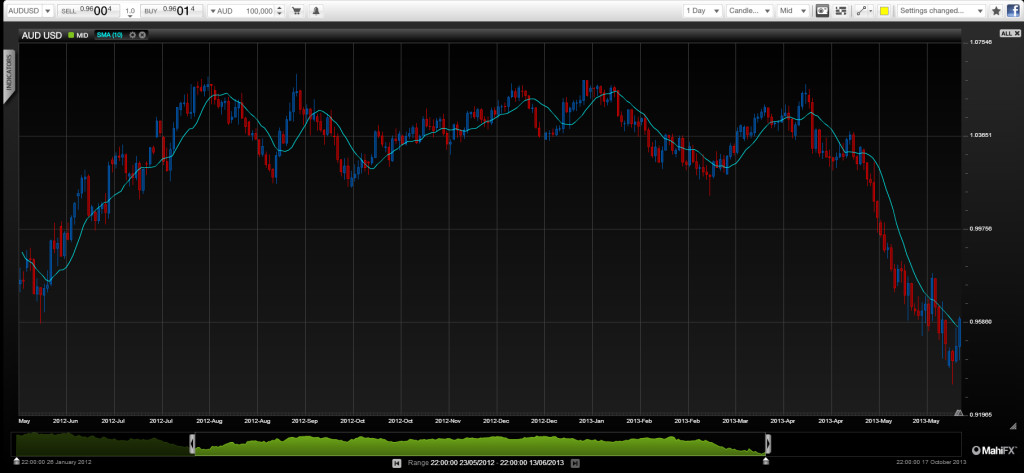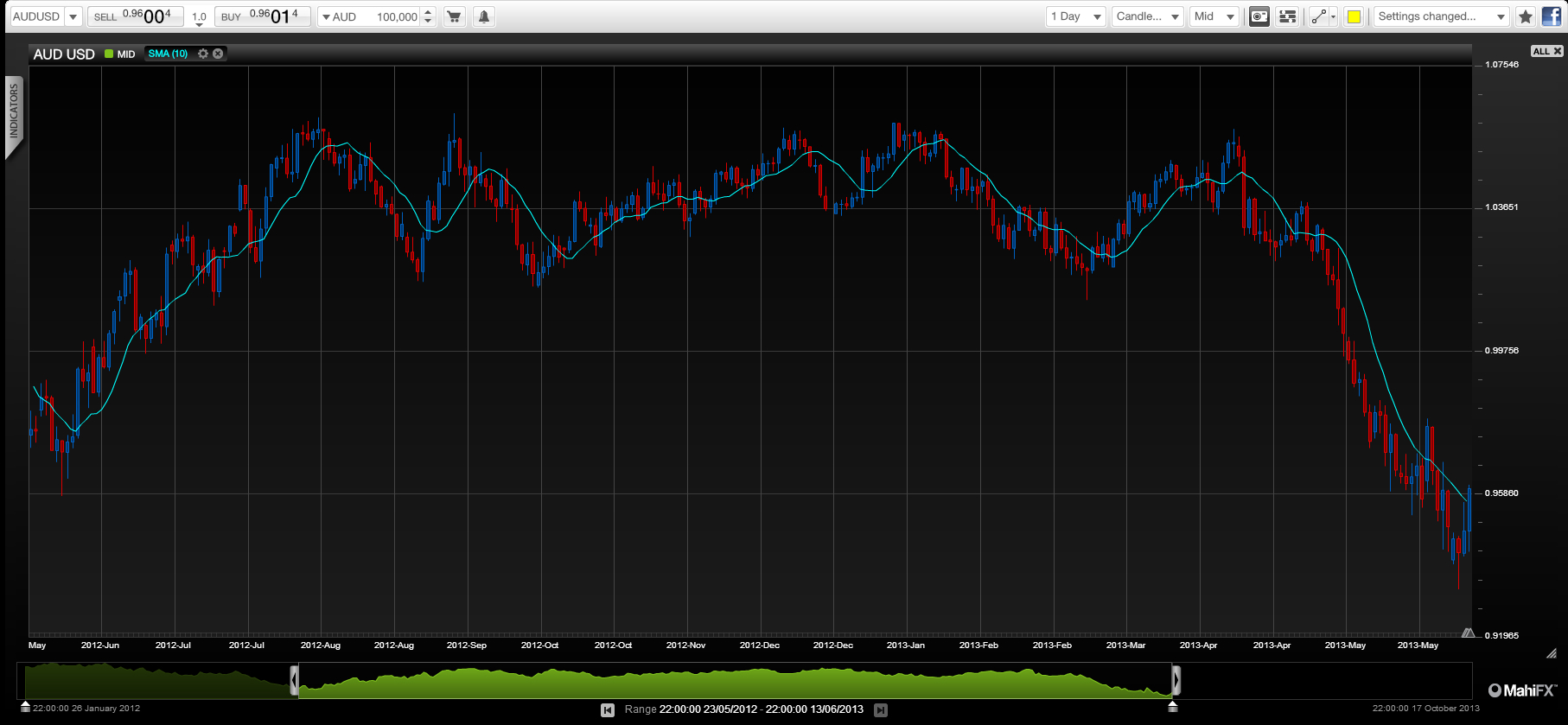Commodity currencies, such as AUD, NZD, ZAR and CAD, have been on a downward trend versus USD due to a series of short-term factors. But given the commodity super-cycle has more or less run its course, it is unlikely that these currencies will make significant sustained recoveries over the longer-term.
In the short-term, the selling of commodity currencies is down to the unwinding of carry trades (usually involving JPY), some restraint from the Bank of Japan with its aggressive monetary policy,
By Justin Pugsley, Markets Analyst MahiFX. Follow MahiFX on twitter at: https://twitter.com/MahiFX
speculation over the US tapering off it’s quantitative easing programme, and in the case of South Africa tensions over wage negotiations with mining unions.
The commodity currencies have benefited enormously from a one-off demand shock from China as it rapidly emerged as the number one or two largest consumer of most raw materials. For many commodities this demand surge was met by decades of under-investment – so when the good times came those who had the capacity made out-sized profits from the trend.
It will take more than QE to turn fading commodity super-cycle

However, the Chinese economy is no longer going to deliver over 8% annual growth year-after-year. Though ignored by many Western investors, the new Chinese leadership has warned consistently that the country is heading for lower growth – partly because of a rebalancing away from commodity-consuming infrastructure spending and exports.
The focus in China is now on trying to foster a consumer-driven economy, similar to those of most developed economies. Though there are still productivity gains to be made in China – GDP growth could slow to as low as 3-4% over the medium term.
China getting old before it becomes rich
But another key trend, which is almost entirely ignored by Western investors, but features heavily in the Chinese media and is of deep concern to the leadership, is the ageing of its population, a result of its one-child policy. As Japan has showed this demographic trend has growth sapping characteristics and is now entrenched across north east Asia. The implication of slower growth among north east Asian’s economies is less demand for commodities.
However, this doesn’t mean that AUD, NZD, ZAR and CAD are destined to languish at very low levels for good. They could yet make short-lived comebacks. For instance, a global slowdown could emerge in 2014, led by the Eurozone, problems with China’s financial system and US fiscal consolidation. This is likely to result in an aggressive monetary response from the leading central banks, which would be positive for commodities and investor risk appetites.
But longer-term, ageing populations across most of the developed world and the lingering aftermath of the financial crisis, does not bode well for commodity currencies. No amount of monetary and fiscal stimulus will create real sustainable demand for raw materials.
